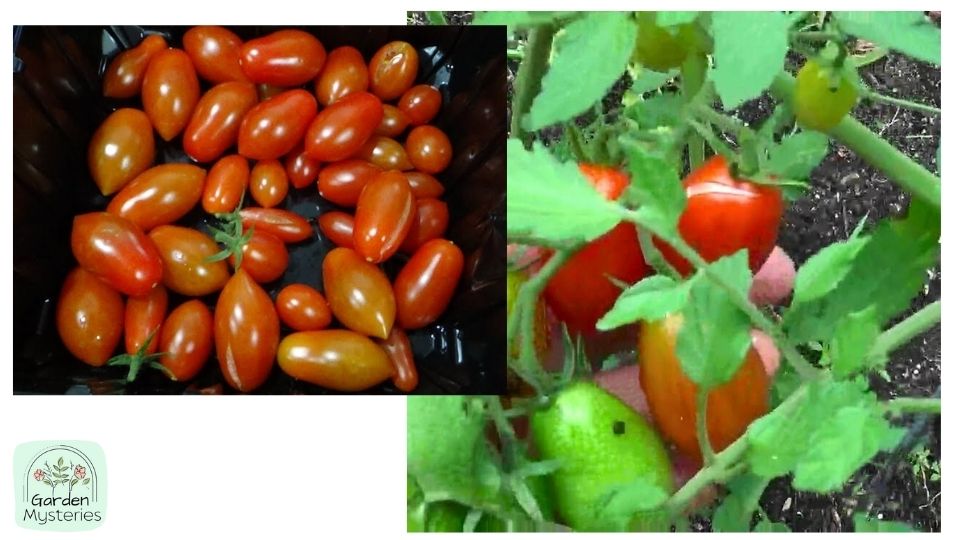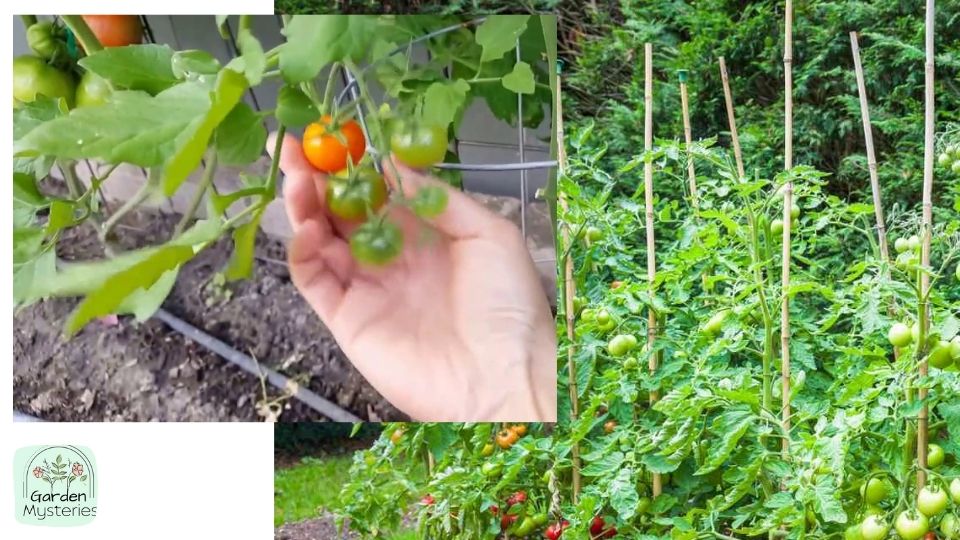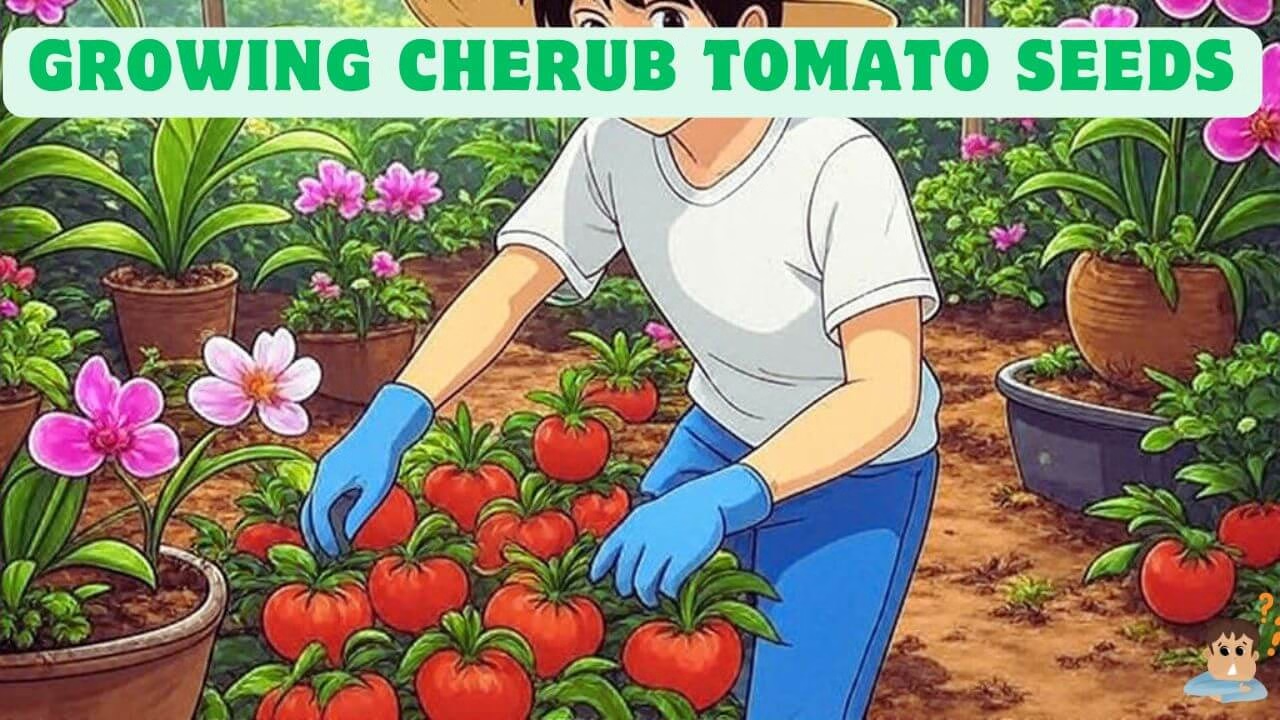Growing Cherub Tomato Seeds on You Home Garden
Did you ever try growing cherub tomato seeds? If yes, what are the issues you face while growing the cherub tomato seeds? Certainly, I have faced a lot of issues and thought, it’s essential to share my experience with you.
In this article, I covered all the essential information including tips and tricks on harvesting and care of cherub tomato seeds and plants. So, read the whole post till the end to know about naturesweet cherubs and growing cherab tomatoes on your own.
What Are Cherub Tomatoes?
Cherub tomatoes are petite, sweet, and vibrant red cherry tomatoes that delight taste buds with their intense flavor and luscious juiciness. These miniaturized tomatoes are known for their alluring appearance and are typically sold still attached to the vine.
These tomatoes are a hybrid variety, meticulously bred for their exceptional taste and eye-catching appeal. They boast a perfect balance of sweetness and acidity, making them a delectable addition to salads, appetizers, and various culinary creations.
With their diminutive size and striking red hue, Cherubs tomatoes provide a burst of flavor in every bite, elevating both the visual and gastronomic aspects of dishes.
Their versatility, health benefits, and irresistibly sweet taste have made Cherubs tomatoes a popular choice among home gardeners and food enthusiasts alike, adding a touch of gourmet charm to everyday meals.
Cherab Tomato Seeds
Cherab tomato seeds are renowned for producing exceptional, flavorful tomatoes. These seeds yield vibrant, red tomatoes with a perfect balance of sweetness and acidity, making them ideal for a variety of culinary applications.
Known for their disease resistance and adaptability, Cherab tomato plants thrive in diverse growing conditions, ensuring a reliable and bountiful harvest.
Gardeners and farmers appreciate the consistent quality and robust flavor profile of the tomatoes grown from Cherab seeds. Whether cultivated in backyard gardens or on a larger scale, Cherab tomato seeds continue to be a popular choice for those seeking delicious, homegrown tomatoes with minimal hassle.
Are Cherubs Tomatoes Healthy?
Cherubs tomatoes are indeed a healthy addition to your diet. Packed with essential nutrients, these miniature tomatoes offer a range of health benefits. They are a rich source of vitamins A and C, which support immune function, vision, and skin health.
Additionally, Cherubs tomatoes provide dietary fiber, aiding digestion and promoting a feeling of fullness. Their natural sweetness makes them a satisfying snack or ingredient in dishes while being relatively low in calories.
The presence of antioxidants, including lycopene, contributes to their vibrant red color and potential health benefits, like reducing the risk of chronic diseases.
Incorporating Cherub tomatoes into your meals can enhance your nutrient intake, contribute to a balanced diet, and add a burst of flavor without compromising on health.
Whether enjoyed fresh in salads, salsas, or as a simple snack, these tomatoes offer both taste and wellness in a tiny package.

Can I Grow Cherab Tomato Seeds?
Yes, you can absolutely grow Cherubs tomatoes plant from seeds. These delightful cherry tomatoes can be cultivated at home with a bit of care and attention. To start, obtain Cherubs tomato seeds either from a reputable supplier or save them from store-bought tomatoes.
Before moving them outdoors, acclimate the seedlings gradually to outdoor conditions, exposing them to sunlight and varying temperatures. Once the danger of frost has passed, transplant the seedlings into containers or a garden plot with well-draining soil and adequate sunlight.
With proper care, watering, and fertilization, you can watch your Cherub tomato plants flourish, producing delicious, sweet tomatoes that are perfect for snacking, salads, and a variety of culinary creations.
How to Grow Cherab Tomatoes from Seeds?
Growing Cherubs tomatoes from seeds can be a rewarding experience. Follow these detailed steps to successfully cultivate these delightful cherub cherry tomatoes:
Step 1: Gather Supplies
Collect the necessary supplies: Cherubs tomato seeds, seed-starting trays or small containers, seed-starting mix, grow grow cherry tomato lights (optional), spray bottle, water, and a warm indoor space.
Step 2: Start Cherub Tomato Seeds Indoors
Begin planting Cherubs tomato seeds indoors about 6-8 weeks before the last expected frost date in your area. Fill the seed-starting trays or containers with a sterile seed-starting mix.
Step 3: Sow Cherub Tomato Seeds
Plant 2-3 Cherubs tomato seeds about 1/4 inch deep in each cell or container. Gently cover the seeds with a thin layer of soil and lightly press down.
Step 4: Provide Moisture
Moisten the soil using a spray bottle or a gentle stream of water. Ensure the soil is consistently damp but not waterlogged.
Step 5: Create a Warm Environment
Place the seed trays or containers in a warm location with a temperature around 70-75°F (21-24°C). You can use a heat mat to maintain a consistent temperature if needed.
Step 6: Provide Light
Cherubs tomato seeds require plenty of light to germinate and grow. If natural sunlight is insufficient, use fluorescent or LED grow lights placed 2-3 inches above the seedlings.
Step 7: Thin Seedlings
Once the seedlings have their first true leaves (second set of leaves), thin out the weakest ones, leaving the healthiest seedling in each cell or container.
Step 8: Harden Off Seedlings
About a week before transplanting, begin the process of hardening off the seedlings. Gradually expose them to outdoor conditions by placing them outdoors for a few hours each day, gradually increasing their exposure.
Step 9: Transplant Outdoors
After the danger of frost has passed and the seedlings are well-established, transplant them outdoors. Choose a sunny location with well-draining soil. Space the plants about 2-3 feet apart.
Step 10: Provide Support
As the Cherubs tomato plants grow, provide support by using stakes or tomato cages to prevent sprawling and to support the weight of the fruit.
Step 11: Water and Fertilize
Keep the soil consistently moist, watering when the top inch of soil feels dry. Fertilize the plants with a balanced, water-soluble fertilizer according to the package instructions.
Step 12: Prune and Maintain
Prune the plants by removing suckers (extra side shoots) that form in the leaf axils. This helps focus energy on fruit production. Monitor for pests and diseases, taking appropriate action if necessary.
Step 13: Harvest Cherubs tomatoes
Cherubs tomatoes will start ripening about 70-80 days after transplanting. Harvest when the tomatoes are fully red and slightly soft. Gently twist or cut the stems to remove the fruit.
By following these steps with care and attention, you can successfully grow Cherubs tomatoes from seeds and enjoy a bountiful harvest of these delicious, sweet cherry tomatoes. And, growing Cherub Tomato seeds are very important in the first phases.
Are you looking for the answer to whether 16-16-8 liquid fertilizer is good for corn or not? You can check out this article.

Tips to Grow Cherubs Tomatoes on the Balcony
Here are some short tips for growing Cherubs tomatoes on your balcony:
- Container Selection: Choose large containers with good drainage to allow proper root growth.
- Sunlight: Place containers in a sunny spot on your balcony, receiving at least 6-8 hours of sunlight daily.
- Potting Mix: Use a high-quality potting mix to ensure good drainage and nutrient availability.
- Support: Consider using stakes or cages to support the plants as they grow and produce fruit.
- Watering: Keep the soil consistently moist, but not waterlogged. Water when the top inch of soil feels dry.
- Fertilizing: Use a balanced, water-soluble fertilizer according to package instructions to provide essential nutrients.
- Pruning: Remove suckers and lower leaves to improve airflow and focus energy on fruit production.
- Pest Management: Monitor for pests and use natural methods or insecticidal soap if needed.
- Disease Prevention: Avoid overhead watering to reduce the risk of fungal diseases.
- Harvesting: Pick ripe tomatoes gently when they are fully red and slightly soft.
- Companion Plants: Consider planting herbs like basil or marigolds nearby to deter pests.
- Mulching: Apply a layer of mulch to conserve moisture and regulate soil temperature.
- Rotation: Rotate container positions occasionally for even sunlight exposure.
- Regular Care: Check plants daily for any issues and provide consistent care for healthy growth.
Remember that balcony conditions can be different from traditional gardens, so adapt these tips to suit your specific balcony environment and local climate.
What Can I Make with Cherub Tomatoes?
Cherubs tomatoes are versatile and can be used in a variety of culinary creations. Their sweet and vibrant flavor adds a delightful touch to many dishes. Create a classic Caprese salad by pairing them with fresh mozzarella, basil, and a drizzle of balsamic glaze.
Whip up a refreshing bruschetta with diced Cherubs tomatoes, garlic, basil, and olive oil atop toasted baguette slices. Blend them into a zesty salsa with onions, jalapenos, cilantro, and lime juice for a tangy dip. Incorporate these mini tomatoes into pasta sauces, enhancing the taste and texture.
Add them to salads, omelets, or sandwiches for an extra burst of flavor and color. Their small size makes them perfect for skewers or appetizers. Whether enjoyed fresh in a variety of dishes or simply snacked on, Cherubs tomatoes lend a touch of sweetness and vibrancy to every culinary endeavor.
FAQs
Can I save Cherab tomato seeds from store-bought tomatoes?
Yes, you can save Cherab tomato seeds from store-bought tomatoes. Simply scoop out the seeds, rinse them, and allow them to dry on a paper towel. Once dry, store them in a cool, dry place for future planting.
How can I prevent pests and diseases in my Cherab tomato plants?
Monitor your Cherry tomato plants regularly for signs of pests like aphids or whiteflies. Use natural methods like introducing beneficial insects or using insecticidal soap to control pest populations. To prevent diseases, provide adequate spacing between plants for good airflow, avoid overhead watering, and promptly remove any infected leaves.
Can I grow Cherab tomatoes alongside other plants?
Yes, you can companion plant Cherab tomatoes with other compatible vegetables and herbs. Basil, marigolds, and chives are known to deter pests that can affect tomatoes. Just ensure that the companion plants have similar light and water requirements for successful co-cultivation.






